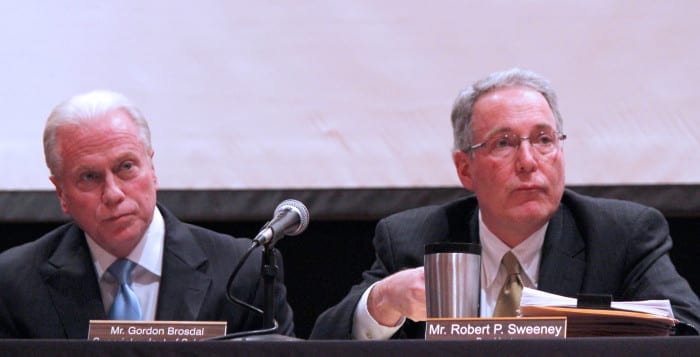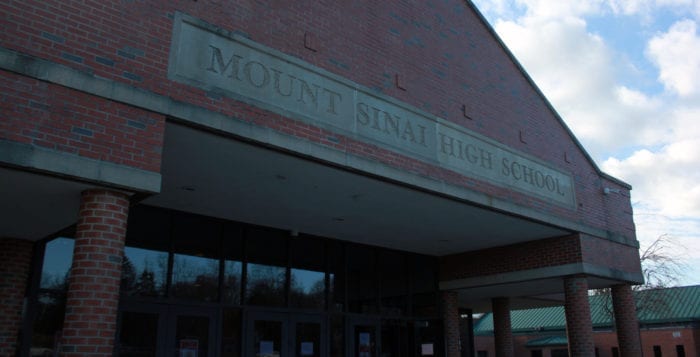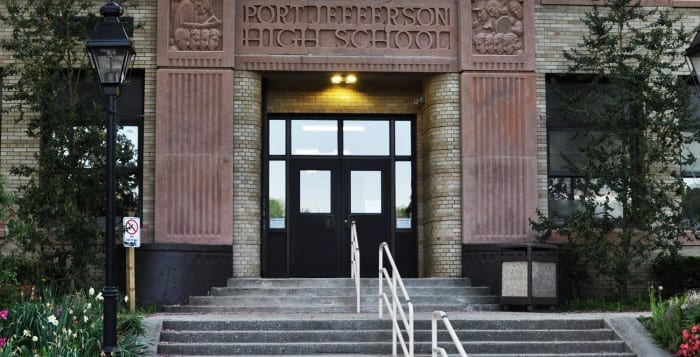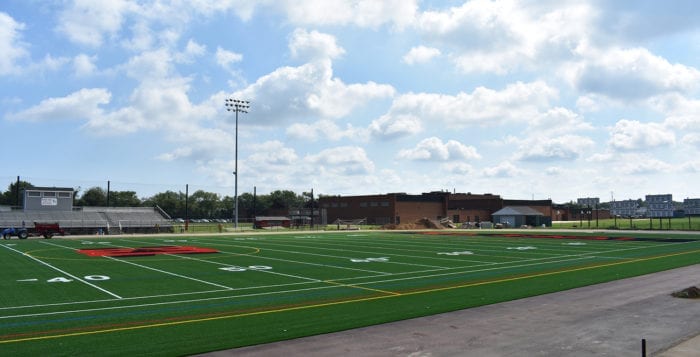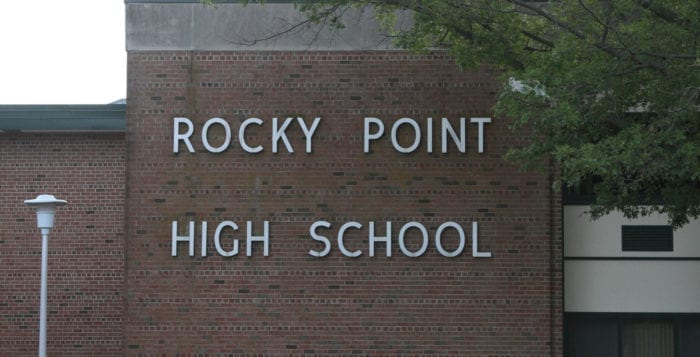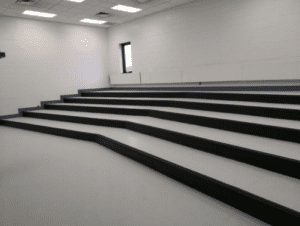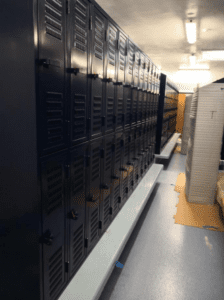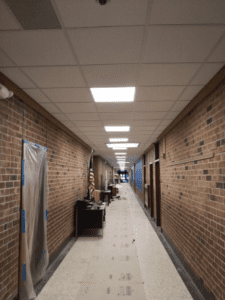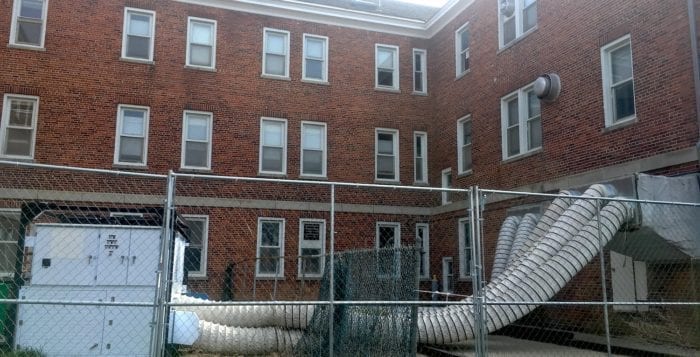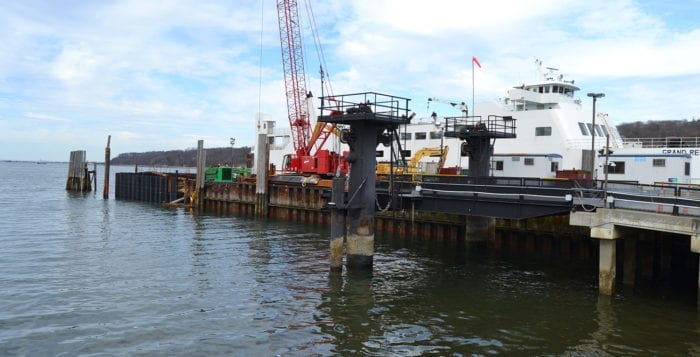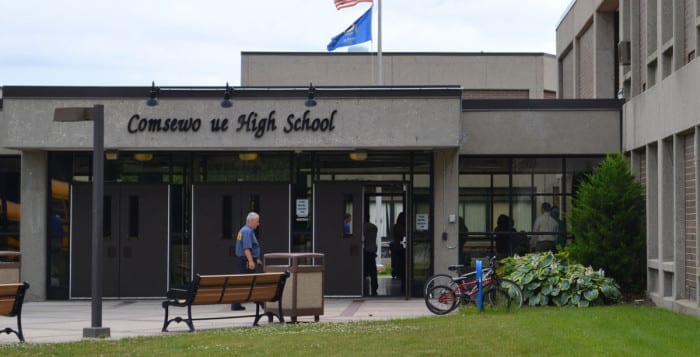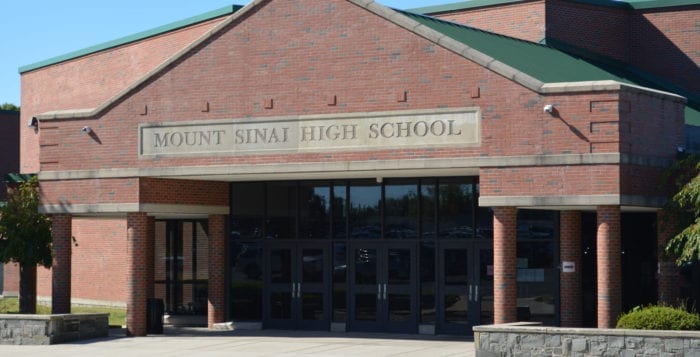The Mount Sinai School District board of education has announced a $25 million price tag for its upcoming capital bond proposal, which would make major repairs to school roofs as well as add new teaching spaces.
At its Oct. 11 meeting Mount Sinai’s board voted to move ahead with the $25,331,498 bond proposal and set a date for a community vote on Dec. 11.
The board showcased the final bond proposal at its Oct. 17 meeting for the community, which proposes an average $240 tax increase on a home assessed at $3,700, or $370 on a home with an assessed value of $5,700.
The bond has changed somewhat since its initial presentation Sept. 26. The sticker price has gone from $24.6 million to $25.3 million and new projects have been added, including upgrades to the boys and girls bathrooms in both the middle and high school. Other additions included creating a girls varsity softball synthetic turf field for $327,750 and a boys varsity baseball synthetic turf infield for $393,300.
The original bond proposal included new additions to the high school orchestra room and a 12,000 square foot fitness center, but those were not included in the final proposal. The September proposal also included a new music lab, but board President Robert Sweeney said the school did not have the space for it, and that additions to the bond were made based on student enrollment, which is expected to decrease in the next several years.
“In four years, there will be 200 less kids in the high school than we’ve ever had,” Sweeney said. “This [bond] is driven by student need and it’s student centered.”
The bond would also fund additional security improvements, including adding security cameras to all school buildings as well as replacing exterior doors and adding non-ballistic security film to windows.
In terms of repairs, the bond would use $2.1 million to complete 54,000 square feet of roofing replacement for the high school, and would also fund projects to repave the high school’s main parking lot, replace flooring in the middle school and replace the public address and master time clock system in all school buildings.
Superintendent Gordon Brosdal said the most important inclusions were those that repaired some of the campus’ aging buildings.
“I think the board did a great job to weigh everything out and keep the community in mind, especially repairing our 40-year-old, 50-year-old, 60-year-old buildings,” Brosdal said.
The bond also includes funds for one synthetic turf multi-purpose field and 1,400 square foot locker room renovations and expansions at the high school.
Sweeney said the board took out multiple items from the original proposal, including repairs to masonry, painting lintels and for the inclusion of natural gas emergency generators for the elementary and middle school because several of those projects can be included in either future capital projects using the district’s unassigned fund balance or with normal district budgets.
“Those items were perfectly fine, but we have money in the budget to do it,” Sweeney said.
Some community members, like Mount Sinai resident Michael McGuire, have questioned the need for a bond if it also leads to tax increases.
“The kids we are investing in cannot afford to live here,” McGuire said.
Voters can weigh in on the referendum Dec. 11. Residents in the school district must be registered in order to vote. Residents can register at the District Office during school hours from 9 a.m. to 4 p.m. through Dec. 5.

